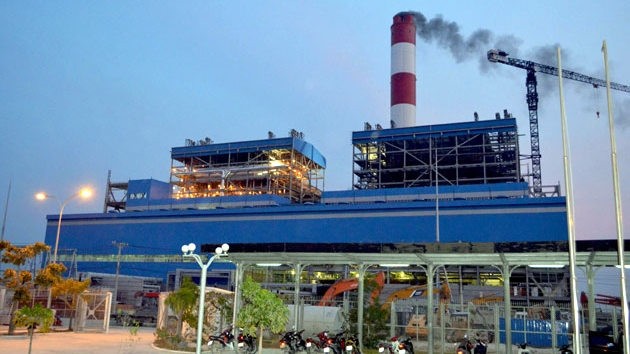Another 12 plants under construction are scheduled for completion between now and 2020, causing growing concerns over environmental safety, especially in regards to ash disposal and air quality standards.
The Ministry of Industry and Trade (MOIT) has confirmed that all coal-fired power plants have submitted their environmental assessment reports to the Ministry of Natural Resources and Environment.
Several plants such as Vinh Tan 2 and Duyen Hai 1, which were reported to have been put into operation without documents certifying the completion of their environmental protection facilities, have also completed the necessary procedures to meet regulatory requirements.
Currently treated industrial sewage from such plants has also met environmental standards and is discharged for reuse.
After being used to cool condensers, water is treated to ensure its temperature is less than 40 degrees Celsius so that the discharged water does not affect wildlife in the local environment.
These plants are also equipped with filtration devices known as electrostatic precipitators to remove fine articles in the air as well as systems to filter nitrogen oxides and sulphur dioxide, ensuring their exhaust fumes meet the national standards on gas emissions from thermal power plants.
The Pha Lai 1 and Ninh Binh plants are considered exceptions as their technology is too old to install sulphur dioxide filtering systems.
However, a number of plants have still failed to fully comply with regulations when dealing with hazardous waste in such phases as collection and classification, and construction of waste storehouses.
The MOIT has asked the owners of such plants to quickly address the above-mentioned problems.
Recently, the Tra Vinh province-based Duyen Hai 1 thermal power plant opened its doors for the public to visit and examine its operations, especially in the waste treatment process. It is hoped that other plants will follow suit.
Meanwhile the MOIT has announced a list of 30 projects, including a number of coal-fired power plants, which have a high risk of polluting the environment and must be put under special supervision.
The ministry has also asked coal-fired power plants not to discharge coal ash into the environment, soon finalise contracts to dispose of coal ash, complete installing automatic emission monitoring equipment and transmit their data to functional authorities.
At a recent meeting, Minister Tran Tuan Anh said that leaders of companies in charge of running coal-fired power plants must pledge not to neglect the environment for economic benefits so that coal-fired power plants would no longer be associated with pollution in the public mind.
He also promised to close any plants that are found to pollute the environment or affect the life of residents living nearby.
Greater coordination between relevant agencies and between the central and local government is needed to ensure environmental management at coal-fired power plants is effective.
Meanwhile the MOIT should step up its supervision and severely punish violators, carefully assess potentially polluting projects right from the design phase, increase oversight on projects under construction and resolutely reject projects that intend to use obsolete technologies.
















